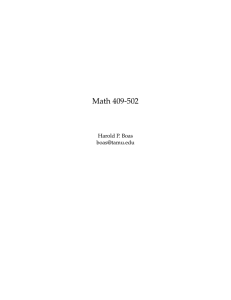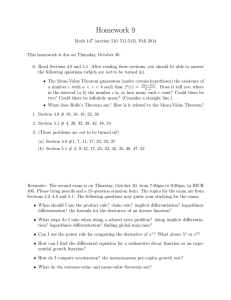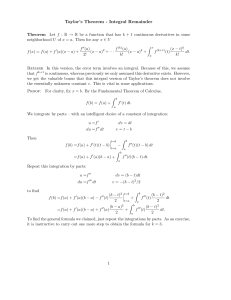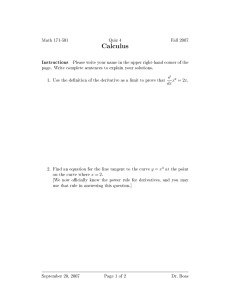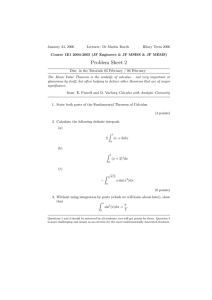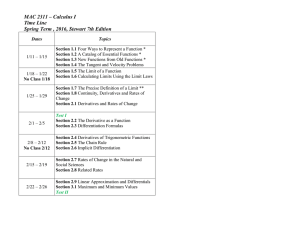Math 410 Examination 1 September 28, 2000 1. Compute
advertisement
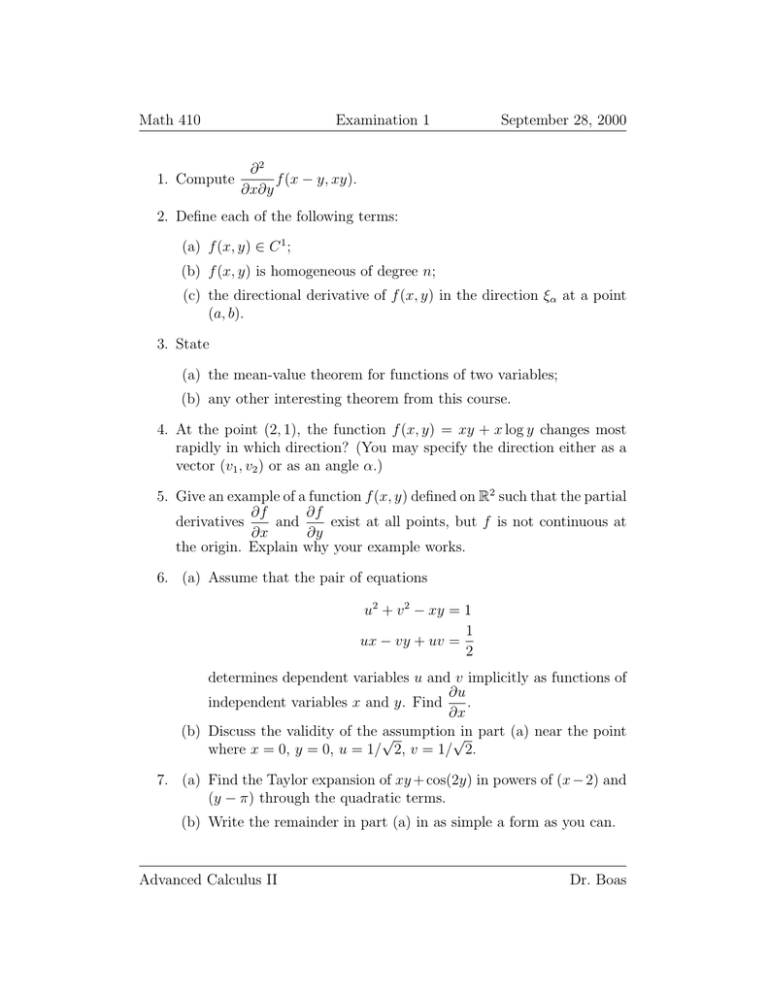
Math 410 1. Compute Examination 1 September 28, 2000 ∂2 f (x − y, xy). ∂x∂y 2. Define each of the following terms: (a) f (x, y) ∈ C 1 ; (b) f (x, y) is homogeneous of degree n; (c) the directional derivative of f (x, y) in the direction ξα at a point (a, b). 3. State (a) the mean-value theorem for functions of two variables; (b) any other interesting theorem from this course. 4. At the point (2, 1), the function f (x, y) = xy + x log y changes most rapidly in which direction? (You may specify the direction either as a vector (v1 , v2 ) or as an angle α.) 5. Give an example of a function f (x, y) defined on R2 such that the partial ∂f ∂f and exist at all points, but f is not continuous at derivatives ∂x ∂y the origin. Explain why your example works. 6. (a) Assume that the pair of equations u2 + v 2 − xy = 1 1 ux − vy + uv = 2 determines dependent variables u and v implicitly as functions of ∂u . independent variables x and y. Find ∂x (b) Discuss the validity of the √ assumption√in part (a) near the point where x = 0, y = 0, u = 1/ 2, v = 1/ 2. 7. (a) Find the Taylor expansion of xy + cos(2y) in powers of (x − 2) and (y − π) through the quadratic terms. (b) Write the remainder in part (a) in as simple a form as you can. Advanced Calculus II Dr. Boas

